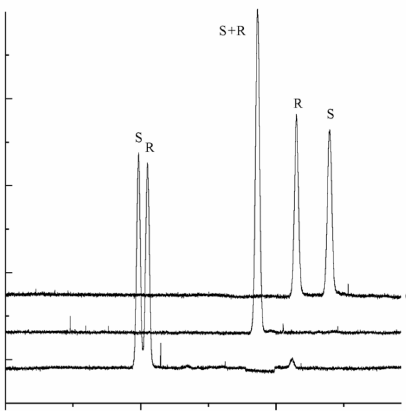-
Direct determination of valproic acid in biological fluids by capillary electrophoresis with contactless conductivity detection
G. Kavran Belin, S. Krähenbühl and P.C. Hauser
Journal of Chromatography B, 847 (2) (2007), p205-209


DOI:10.1016/j.jchromb.2006.10.003 | unige:3189 | Abstract | Article HTML | Article PDF
Capacitively coupled contactless conductivity detection (C4D) is a new technique providing high sensitivity in capillary electrophoresis (CE) especially for small ions that can otherwise only be determined with indirect methods. In this work, direct determination and validation of valproic acid (VPA) in biological fluids was achieved using CE with C4D. VPA is of pharmacological interest because of its use in epilepsy and bipolar disorder. The running electrolyte solution used consisted of 10 mM 2-(N-morpholino)ethane sulfonic acid (MES)/dl-histidine (His) and 50 μM hexadecyltrimethylammonium bromide (HTAB) at pH 6.0. Caproic acid (CA) was selected as internal standard (IS). Analyses of VPA in serum, plasma and urine samples were performed in less than 3 min. The interference of the sample matrix was reduced by deproteinization of the sample with acetonitrile (ACN). The effect of the solvent type and ratio on interference was investigated. The limits of detection (LOD) and quantitation (LOQ) of VPA in plasma samples were determined as 24 and 80 ng/ml, respectively. The method is linear between the 2 and 150 μg/ml, covering well the therapeutic range of VPA (50–100 μg/ml).
